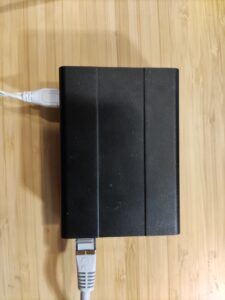Voice quality issues can significantly impact communication experiences, whether you’re using traditional landlines, mobile devices, or Voice over IP (VoIP) systems. When users encounter problems like echo, noise, clipping, clicking, or dead air, it’s crucial to diagnose the root causes promptly. Let’s explore each issue and how to identify its source within the network.
- Echo:
- Description: Echo occurs when you hear your own voice repeated with a slight delay during a call.
- Causes:
- Acoustic Echo: Sound from the speaker’s voice reflects back into the microphone due to room acoustics or speakerphone setups.
- Network Echo: Delayed echoes caused by network latency or packet loss.
- Diagnosis:
- Listen for audible echoes during the call, or monitor your network with a tool that can detect and alert about echo in the payload, e.g. Sevana PVQA Server.
- Test with different devices and environments.
- Root Cause Analysis:
- Check network latency and jitter.
- Implement acoustic echo cancellation (AEC) algorithms.
- Noise:
- Description: Background noise interferes with voice clarity.
- Causes:
- Environmental Noise: External sounds (e.g., traffic, wind) affect call quality.
- Network Noise: Packet loss or glitches introduce artifacts.
- Diagnosis:
- Listen for unwanted sounds (buzzing, hissing, etc.) , or monitor your network with a tool that can detect and alert about echo in the payload, e.g. Sevana PVQA Server..
- Test in different environments.
- Root Cause Analysis:
- Optimize network infrastructure.
- Use noise reduction techniques.
- Clipping:
- Description: Clipping occurs when an audio signal exceeds its maximum allowed limit.
- Causes:
- Amplifier Overdrive: Amplifiers push signals beyond capacity.
- Digital Clipping: Signal exceeds the maximum level.
- Diagnosis:
- Listen for distorted audio during loud passages, or monitor your network with a tool that can detect and alert about echo in the payload, e.g. Sevana PVQA Server.
- Check for square-wave-like waveforms.
- Root Cause Analysis:
- Avoid excessive amplification.
- Ensure symmetrical output swing.
- Clicking:
- Description: Clicks are sudden, brief disruptions in the audio.
- Causes:
- Network Glitches: Packet loss or interruptions.
- Hardware Issues: Faulty cables or connectors.
- Diagnosis:
- Listen for intermittent disruptions, or monitor your network with a tool that can detect and alert about echo in the payload, e.g. Sevana PVQA Server..
- Test with different devices.
- Root Cause Analysis:
- Monitor network stability.
- Inspect hardware connections.
- Dead Air:
- Description: Dead air refers to complete silence during a call.
- Causes:
- Network Drops: Temporary loss of connection.
- Software Glitches: Call processing issues.
- Diagnosis:
- No audio for a period.
- Abrupt silence during the call.
- Root Cause Analysis:
- Monitor network stability with a system that can detect and alert of audio gaps inside of the payload, e.g. with Sevana PVQA Server.
- Update call processing software.
Conclusion:
Identifying the root causes of voice quality problems involves understanding the symptoms, analyzing the call payload, and addressing specific issues within the network. Proactive troubleshooting ensures better communication experiences. Upon all said above using automatic call quality monitoring system that can detect and alert on voice quality impairments inside the payload will significantly improve QoE and QoS problems root cause analysis. Remember that clear voice quality enhances productivity and user satisfaction! 🗣️🔊🚀
